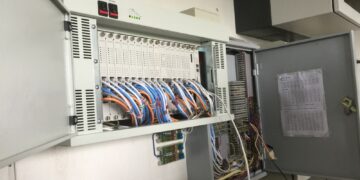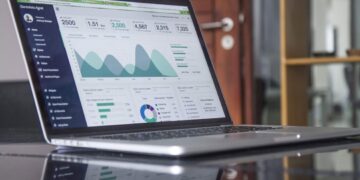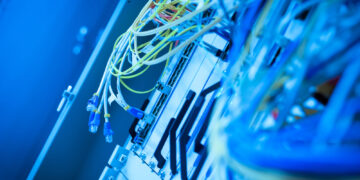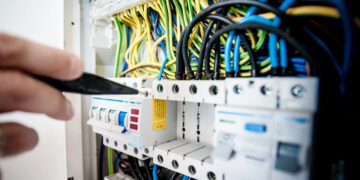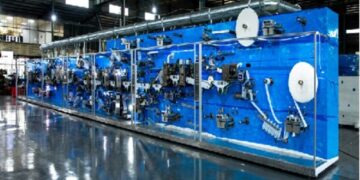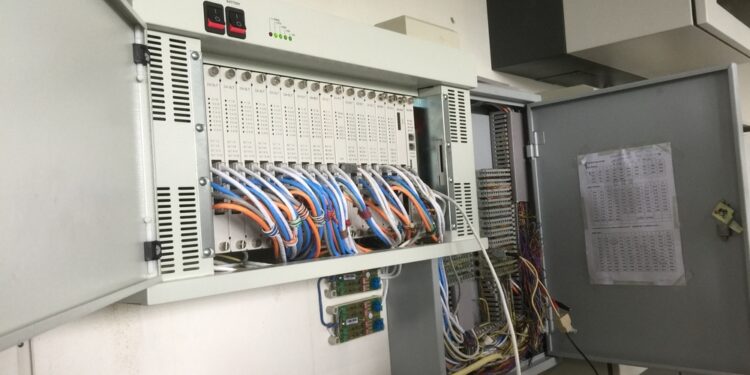Businesses require data centers more than ever because they continue building their digital infrastructure. The facilities that operate data and maintain website and cloud service operations need high reliability and operational efficiency because they manage considerable quantities of information. Smart PDU (Power Distribution Unit) stands as a vital component which produces major effects on both operability and performance.
The Smart PDU functions as an advanced network-active device which handles electrical power distribution for different equipment pieces in data centers. Smart PDUs accomplish more than the power distribution tasks performed by traditional PDUs. Advanced Smart PDUs supply data center administrators with complete power monitoring alongside remote management systems and specialized control functions. This blog investigates how Smart PDUs transform data center efficiency while upgrading reliability capabilities to help businesses achieve better competitiveness through minimized outages.
What is a Smart PDU?
Controllers enable power distribution unit functionality when they incorporate intelligent features that enable remote monitoring and control and connectivity capabilities. Traditional power distribution units remain powerless to monitoring yet a it allows administrators to control their power distribution and track environmental factors alongside power utilization from a centralized interface.
1. Real-Time Power Monitoring and Alerts
Real-time power consumption analysis is the standout feature that a Smart PDU delivers to its users. Through a central interface IT administrators obtain real-time power usage data for outlets and racks in addition to specific equipment throughout the whole data center. The advanced level of visibility lets users make better power distribution decisions and better detect power inefficiencies and anomalies.
2. Remote Power Management
Data center power management usually needed hands-on tasks such as equipment disconnection and server restart and manual power circuit handling. The traditional approach demanded significant amounts of time together with resource inefficiency before leading to prolonged data center downtime. It enable administrators to operate power management functions throughout their whole operational infrastructure from a remote location.
This remote control capability includes:
- Power cycling: Through remote operation administrators have the ability to switch off and back on power at the outlet level. This function helps resolve server problems as well as run maintenance activities irrespective of physical building location for the data center.
- Individual outlet control: Administrators using a Smart PDU can control the power distribution either at individual outlets or at specific outlet groups. Strict power distribution management through this system leads to less power utilization waste while increasing overall energy operational efficiency.
- Sequenced power distribution: Your Smart PDU system may enable you to establish an order for power distribution to your connected devices. Fundamental equipment needs to power up before all other devices because this minimizes the chances that podr surges affect key components.
3. Enhanced Energy Efficiency
Businesses that manage large data center operations must prioritize energy efficiency as an essential matter. Power optimization stands as an essential need because energy prices keep increasing and sustainability matters have become critical. The central function of Smart PDUs helps businesses reach these performance targets.
- Power consumption optimization: Smart PDUs enable data center managers to view instantaneous power consumption therefore helping them spot excessive power use. Systems and servers using high amounts of power become optimization targets for improved systems or workload distribution solutions.
- Power distribution optimization: The smart distribution algorithms in Smart PDUs provide power only to equipment which requires it during each specific period thus minimizing unnecessary power consumption throughout the system.
- Energy cost tracking: Businesses can track their power usage expenses throughout their data center using specific Smart PDUs which monitor energy costs. Energy saving assessments through Smart PDUs lead to both operational cost reductions and better sustainability of infrastructures.
4. Increased Reliability and Reduced Downtime
Data center reliability remains the top most important requirement in this industry. A single critical failure component leads to service disruptions that produce losses of essential data and generates serious damage to corporate image and public trust. This risk gets reduced through Smart PDUs which combine essential redundancy features with state-of-the-art monitoring functions.
- Redundancy: Dual power input features on Smart PDUs give users automatic backup power feeding when main supply power fails. The backup redundancy system safeguards essential systems because it allows them to function continuously during power disruptions or failures.
- Automated failover: If power issues occur Smart PDUs will initiate failovers to secondary power sources or backup systems which keeps systems running without interruptions.
- Environmental monitoring: Smart PDUs contain built-in environmental monitoring sensors which check both temperature and humidity levels. The platform generates caution warnings when environmental elements deviate from their predefined ranges allowing technicians to take in advance steps to stop equipment overheating and system destruction.
5. Scalability for Growing Data Centers
Due to their modular design Smart PDUs serve two functions: they offer both seamless integration with existing power distribution networks and they allow daisy-chaining or networking features for expanded infrastructure management. The system maintains scalability because it allows your business growth to expand your power management framework without making your data centers inefficient or unreliable through periodic expensive replacements.
Conclusion
Current demand for highly efficient power distribution in data centers surpasses all-time highs as businesses need both rapid operation and stable network operations. Smart PDUs serve as fundamental elements for satisfying these requirements through their capabilities to provide superior power monitoring features as well as remote management functions together with energy optimization features and improved reliability features.
Businesses implementing Smart PDUs obtain control of their data center functions and reduced downtime alongside enhanced energy efficiency along with better infrastructure management of growing demands. Smart PDUs function as the essential element of modern IT management by transforming data center power delivery to ensure continuous business operations and sustainability.
